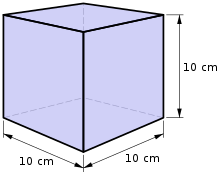
Back Unidat de mesura AN وحدة قياس Arabic عبرة ARY Unidá de midida AST Борциналъул рикӀкӀкен AV Ölçü vahidləri Azerbaijani Адзінка вымярэння Byelorussian Адзінкі вымярэньня BE-X-OLD Системи единици Bulgarian পরিমাপের একক Bengali/Bangla


Units of measurement give standards so that the numbers from our measurements refer to the same thing. Measurement is a process that uses numbers to describe a physical quantity. We can measure how big things are, how warm they are, how heavy they are, and many other features.
For example, the metre is a standard unit to measure length. Before 1982, one meter was defined as the distance between two markers on a special metal rod. During that time, saying that something had a length of two meters meant that it was exactly twice as long as the rod used to define the meter. Now scientists define the meter by using the speed of light.
In the past, different units were used in different countries. Today, most units of measure fall into one of three systems:
The older two, the British imperial system and the closely related US customary system use the foot as a measure of length, the pound as a measure for weight, and the second as a measure for time. They use other units as well. The number of smaller units that make the bigger units in these two systems varies: For example, there are 12 inches in a foot and 16 ounces in a pound.
The newest and most used of the three systems is the metric system or SI system which use 10, 100 or 1000 of a smaller unit to make a bigger one. For instance, there are 100 centimetres in one metre or 1000 grams in one kilogram. This system uses the metre for length and kilogram for mass.
The common, non-metric measurement of time does not follow this pattern. The second is the basis for time measurement, and it is based on the sexagesimal system: 60 seconds make one minute, and 60 minutes make one hour.